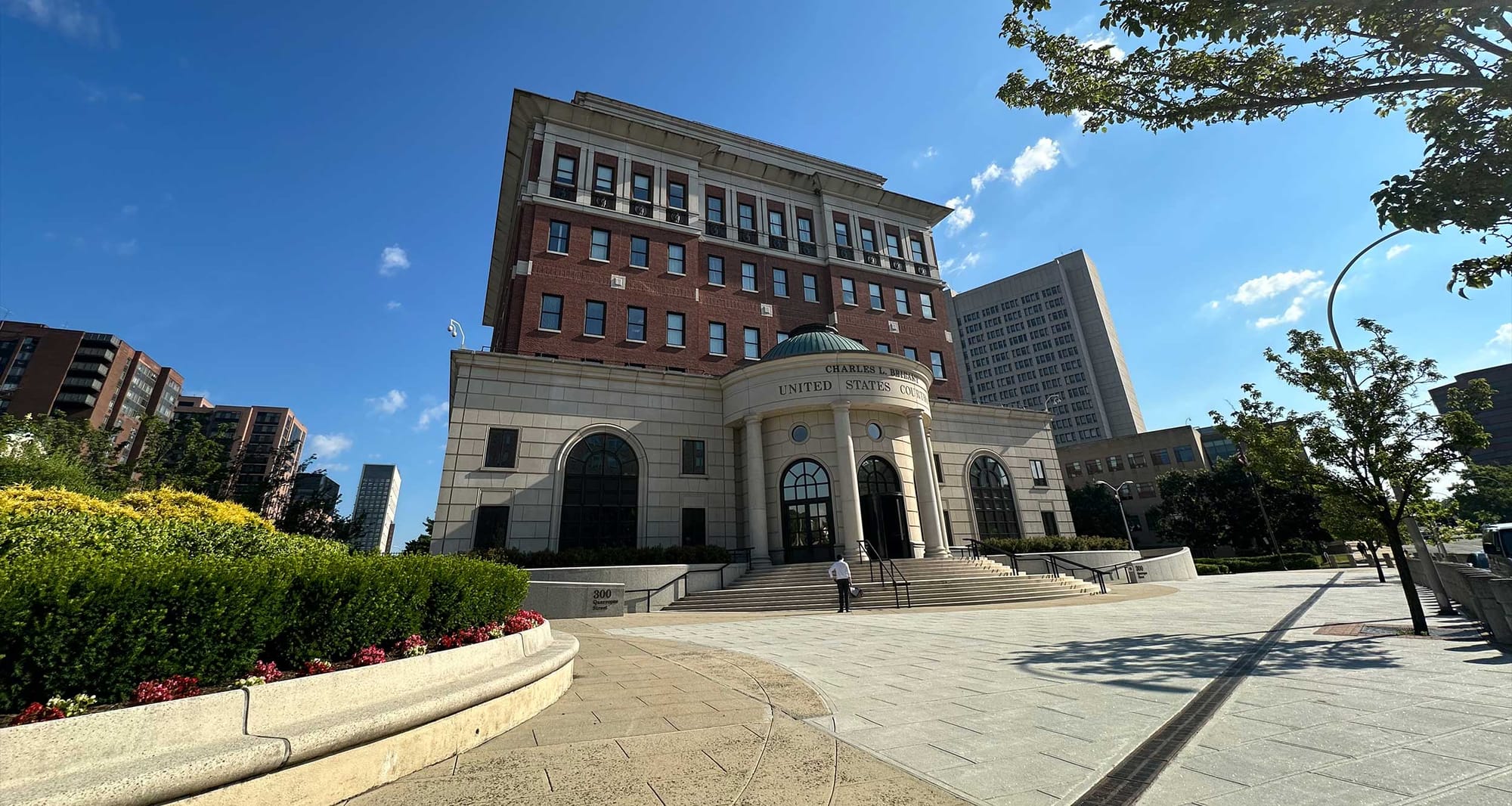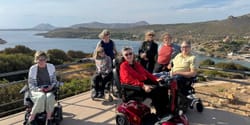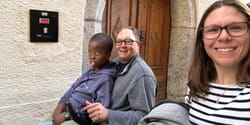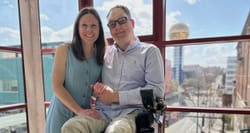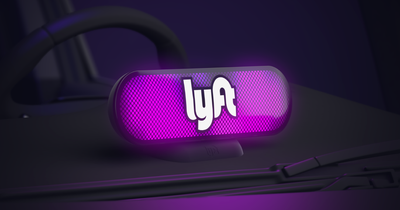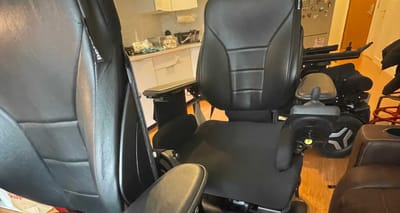Arguments concluded last week in the case of Harriet Lowell et al. v. Lyft, Inc. and, prior to adjournment, Judge Philip M. Halpern of the United States District Court for the Southern District of New York remarked that it is a shame that a company like Lyft cannot find a reasonable way to serve wheelchair users across the United States. He appeared frustrated that a matter of accessibility for disabled people must be decided by the courts.
The judge ordered the plaintiffs and defendants to submit their closing arguments as written briefs, with each party having one opportunity to rebut opposing counsel’s position. That means that the case will not truly be complete for at least two more weeks and an immediate verdict is unlikely. When a verdict is ultimately rendered, it will be covered in detail in this newsletter — but first, I would like to catch you up on the key arguments made before the court.
If you value knowledge and insight into the stories impacting the world of accessible travel, please consider upgrading to a paid subscription or making a one-time or recurring gift via PayPal. Your support makes it possible for me to continue reporting on the stories that matter.
Plaintiffs’ Case
Attorneys for the plaintiffs and class members made their position clear from the start, stating that the case is “about enforcing the Americans with Disabilities Act,” while claiming that Lyft’s alleged pattern and practice of disability discrimination will continue unless the court acts decisively.
As I described in the pre-trial primer on this case, plaintiffs proposed the following nine modifications to Lyft’s policies and procedures, which they claim are “reasonable modifications” that will improve accessibility for wheelchair users on the Lyft platform:
- Remove the App Blocker: Lyft should eliminate the feature that hides WAV options from users in non-access regions, making WAVs automatically visible as a transportation option.
- Survey Drivers About WAV Access: Lyft should inquire whether their drivers have access to WAVs, potentially increasing the pool of available WAV drivers.
- Cross-Dispatching: Allow WAV drivers to receive ride requests for both standard and WAV modes to improve service efficiency.
- Implement Priority Logic: Prioritize WAV requests to ensure that WAVs are allocated effectively, similar to practices in New York City.
- Increase Marketing: Enhance advertising efforts to attract more WAV drivers and raise awareness among potential riders.
- Incentivize WAV Drivers: Offer bonuses and incentives to encourage more drivers to operate WAVs.
- Include WAVs in Rental Programs: Make WAVs available through Lyft’s Express Drive and FlexDrive rental programs.
- Form Partnerships: Collaborate with car rental, taxi, and other transportation companies that have WAVs to increase available WAV supply.
- Accessibility Surcharge: Implement a ten-cent surcharge on all rides to fund WAV services.
The burden of proof lies largely with the plaintiffs in cases such as this, and to be successful they must demonstrate that the proposed modifications do not impose an unreasonable burden on Lyft, and that they would achieve the goal of improving access for the wheelchair users represented at trial.
This case involves the interests of three plaintiff classes — a class consisting of disabled people in Westchester County, New York, a class consisting of disabled people in the State of New York, and a national class of disabled people. While evidence was presented to support the case for modifications to Lyft’s policies in Westchester County, the State of New York and beyond, attorneys focused heavily on the discrimination that is alleged to have occurred in Westchester County.
Perhaps the most important hurdle in this case was for plaintiffs to prove that a supply of wheelchair accessible vehicles does exist, and that by forcing Lyft to adopt the proposed modifications to policies and procedures, disabled people would receive improved service. Attorneys repeatedly drove home the point that, for wheelchair users, “some service is better than no service,” even if it is not reliable or equivalent to the service provided to nondisabled people.
Plaintiff Harriet Lowell contended just that in her depositions and testimony, in which she stated that having the option to request a wheelchair accessible vehicle on Lyft would be an improvement to not being able to request one at all, even if her request was not always fulfilled.
This testimony pointed to the central question of this case: how would the proposed modifications improve the experience for wheelchair users on the Lyft platform? While it is common sense that all nine modifications would have a positive impact on outcomes for disabled people, common sense is not evidence. Plaintiffs needed to prove with data, testimony or both that the modifications would improve accessibility and that the cost to Lyft would not be unreasonable or far outweigh the projected benefits in a cost-benefit analysis. Here were some of the highlights from what the plaintiffs’ presented at trial:
- Using data provided by Lyft during discovery, plaintiffs showed that, in one month alone, 527 wheelchair accessible vehicles on the Lyft platform entered Westchester County — likely from New York City, where Lyft is mandated to provide wheelchair accessible service following regulation by the New York City Taxi and Limousine Commission (TLC). Those vehicles were not eligible to pick-up wheelchair users like Mrs. Lowell in Westchester County because the county is not a designated Access region on the Lyft platform.
- During deposition, Lyft’s Access Program Manager had estimated that there are a total of 10,000 wheelchair accessible vehicles in the United States. Plaintiffs’ expert witness Alex Elegudin, former Accessibility Chief at MTA New York and Accessibility Program Manager at the New York City TLC, testified that WAV manufacturers like BraunAbility, VMI, and Freedom Motors collectively produce 15,000 to 20,000 WAVs per year and, assuming a 10-year lifespan, he concluded that there are approximately 150,000 to 200,000 WAVs in the United States — a figure that far exceeds Lyft’s estimates
- The plaintiffs deposed Christopher Wu, the former head of Lyft’s national WAV program, who testified that he had modeled wheelchair accessibility programs at Lyft that had a “scalable model to profitability,” but the proposals were rejected by Lyft executives. He also described cross-dispatching WAV vehicles to serve both wheelchair users and nondisabled passengers as “low-hanging fruit” that would improve the economics of providing WAV service.
- Asaf Selinger, former Senior Manager of Third Party Supply Partnerships at Lyft, stated in a deposition that in one market, Lyft had employed through a third-party “36 people [drivers] who sit most of the day” waiting for an Access request from a disabled rider. He continued, “We are paying people to sit and wait” in markets where cross-dispatching is not enabled, and where WAV vehicles are required by local ordinance. Plaintiffs contended that this was evidence of Lyft’s alleged attempt to set WAV services up for failure so that the company would not be forced to expand to additional markets.
- Lyft’s Access Program Manager testified that the primary cost of removing the so-called “app blocker” and opening up WAV service in all markets was “reputational harm” should the service not meet customer expectations. Plaintiffs argued that the harm to Lyft’s reputation would be no greater than what is currently associated with refusing to provide service to disabled people at all.
Barring the judge imposing a specific service standard not supported by law or precedent, it is my view that the Plaintiffs cleared a key hurdle in utilizing Lyft’s own data to prove that ramp-equipped WAV vehicles, likely in service in nearby New York City, routinely operate within Westchester County. Where WAV vehicles exist, they could presumably be drawn to the Lyft platform to serve disabled riders, something which is presently an impossibility except within Lyft’s nine access regions.
Jeremiah Frei-Peterson, lead attorney for the classes, shared the following statement at the conclusion of the trial:
Lyft is a multibillion dollar transportation company that has revolutionized transportation by offering all nondisabled adults all across the country the opportunity to request a vehicle and, if a vehicle is available, the opportunity to take a ride. Harriet Lowell, Westchester Disabled On The Move, and I believe that the Americans with Disabilities Act entitles people with disabilities to the same opportunity. Lyft believes that it does not.
At trial, the former head of Lyft’s national team for wheelchair accessible vehicles, admitted that, for people with disabilities, Lyft’s policy is “to do as little as possible unless forced.” The record reflects that Plaintiffs put in ample proof that Lyft’s policy is unlawful and that, if Lyft modifies its policy, it can provide access to people who need wheelchair accessible vehicles.
My colleagues and I are very grateful to Judge Halpern for conducting an efficient and fair trial and for thoughtfully considering the evidence. We are also profoundly honored to represent Harriet Lowell, Westchester Disabled On The Move, and millions of people with disabilities who have been bravely fighting to end Lyft’s discrimination. We look forward to Judge Halpern’s decision.
Lyft’s Defense
Lyft’s defense focused largely on casting WAV services as non-viable on its platform, while attempting to classify the cost of proposed modifications as too burdensome.
Lyft hired respected economist and Boston University Professor Dr. Marc Rysman to perform an analysis of what it called the viability of WAV services on its largely independent contractor-driven transportation network. The court accepted his expert testimony, but Judge Halpern did not state specifically what “weight” he would assign to it in deciding the case.
Dr. Rysman performed an empirical analysis of standard mode (non-accessible) ride data supplied by Lyft for the month of February 2020 (one month prior to the Covid-19 pandemic shut-down), using that analysis to predict the number of accessible rides that would be completed on the Lyft platform should it open access mode in all areas. His models revealed that WAV ride requests would enjoy high completion rates in densely populated areas, but that outcomes would be poor in less populated areas where fewer rides are requested.
On cross-examination, Mr. Rysman agreed that Lyft is treating disabled and nondisabled people differently, but stated that his analysis considered the desirable outcomes of low wait times, number of ride requests, and high completion rates purely from a business perspective.
Plaintiffs cast doubt on his analysis by pointing out the limited data set (one winter month), his failure to validate the conclusions against additional data sets, the assumption that the demand for accessible Lyft rides is spread equally throughout the country, the failure to address cross-dispatching of WAV vehicles specifically, and the impact of pre-scheduled rides on completion rates.
In the testimony presented at trial, Dr. Rysman did not discuss how modifications like increased marketing and targeted incentives for WAV drivers might impact consumer demand or the likelihood of drivers to lease or purchase WAV vehicles to operate on the platform. The judge remarked that neither side had presented “perfect proof,” so it is fair to say that Lyft could have mounted a more convincing defense.
Expert testimony may be ignored by the court
Both the plaintiffs and the defense engaged with expert witnesses who provided analysis and perspective that was picked apart on cross-examination. Experts provided testimony that did little to answer the key question before the court — would the requested modifications to Lyft’s policies and procedures improve accessibility, and are they cost-effective?
Although Lyft has argued through its expert witness that opening WAV services to additional markets would result in “poor outcomes” for wheelchair users, the plaintiffs consider that irrelevant, given that even limited or infrequent service is an improvement over none at all. Plaintiffs suggested that the costs to Lyft to implement the first four modifications would be negligible, and that the proposal to implement an accessibility surcharge on all Lyft rides would generate revenue for more expensive proposals.
The unique case structure means the Judge need not deliver an all-or-nothing verdict
What may seem like an easy case to decide on the surface is actually a much more complicated web of interested parties and requests for relief. With plaintiffs, three distinct classes, and nine requested modifications to Lyft’s policies, Judge Halpern is effectively faced with 36 decisions. The plaintiff, Harriet Lowell, and each of the three classes (disabled people of Westchester County, New York State, and the United States) have requested the nine modifications described earlier in this article. Each class deserves consideration, and it is possible that the modifications may be ordered in some cases, but not all.
Let’s take the first modification as an example, which would effectively open the Lyft platform to both WAV drivers and wheelchair users who need accessible rides. It is possible that the judge might order that some classes sustained their case, while others did not. In this case, one might see the modification ordered in Westchester County and the State of New York, but not nationwide. This is not a prediction, but an example of how the judge could end up with a mixed result in this uniquely structured case.
While I am not equipped to set odds on the outcome of this trial, I do suspect that the Judge will deliver a split decision — the only question is, how far will that decision lean to either the plaintiffs or the defense? Return to WheelchairTravel.org for full coverage of the judge’s ruling after it is released, likely in the next month or two.

